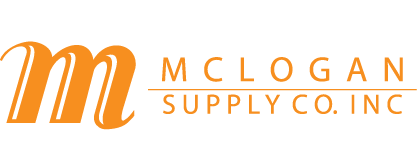Top 5 Important Things to Know When Choosing a Squeegee
 What’s so important about a squeegee? Simple…it is one of the most important tools for screen printers, yet it may be one of the least understood and underappreciated pieces of equipment in the project.
What’s so important about a squeegee? Simple…it is one of the most important tools for screen printers, yet it may be one of the least understood and underappreciated pieces of equipment in the project.
Have you ever wondered why there are so many different squeegee types or how to choose the correct one you’re your project needs? Here are some tips on how to choose the right squeegee for your style or a particular project:
1. Shapes Squeegee blades come in different shapes and it is very important to choose the right shape for the job to get the best result:
- V-Shaped (single or double-bevel): This shape is used for printing on uneven or cylindrical-shaped substrates
- Square (also called Straight Edge): The most often used by screen printers is square-edge squeegee blade. It works well for standard or regular ink applications
- Round (or ball nose): The round blade is used for a heavy deposit when printing special-effects inks. The round shape of the blade passes more ink through the screen and is often used for printing gel or puff inks
2. Handles A squeegee consists of two parts: the blade and the blade holder. It may seem like a simple design or unimportant, but the blade holder comes in different shapes and materials each designed for different functions.
For manual screen printing, for example, the holder essentially becomes the handle of the squeegee. It is important how the handle feels to the printer when holding the squeegee, especially after several hours of printing.
Wood, aluminum or plastic are the most popular materials used for handles and each of these materials have its fans. For example, some love the organic feel of the wooden handles and the warmth of wood. Conversely, fans of plastic or aluminum like their easy-to-clean properties. Squeegees with aluminum or metal holders are generally used with automatic printing machines, where the blades can be replaced.
Some handles that are designed to allow blade replacement so be sure to check how easily the replacement can be made. Some designs feature easy to undo clips while others have to be screwed in place for example.
Another consideration when choosing handles is the shape. Ergonomic handles are on the market today that help combat fatigue and stress-related, repetitive injuries. Handles also come in different heights, most commonly are 4- and 5-inch widths depending on whether you have large or small hands.
3. Durometer As a rule, squeegee blades are now made of polyurethane vs. rubber. Durometer is a measure of the squeegee blade’s hardness. A lower the value the softer the blade. For example:
- 50-60 durometer indicates a soft squeegee
- 60-70 durometer is a medium-hard edge
- 70-80 durometer indicates a hard blade
Like the blade’s shape, the different durometers also determine the amount of ink that is deposited on the fabric. The soft blade deposits more ink than the hard blade. Here are some basic rules of thumb:
- For general projects, printers usually prefer a hardness of around 70-75 durometer
- A 55 durometer (soft) blade would be good for printing gels and puff inks, as these types of ink require heavier deposits. A soft blade also may be used to lay down more ink on heavily textured fabrics
- An 80 durometer blade is great for printing a fine, detailed print or four-color process prints
4. Composite Blades To take a simple tool and make it even more useful, there are squeegees with composite blades. This means two or more blades of differing durometers can be either stacked or sandwiched together. For example, a 70/90/70 composite blade is made up of a hard blade wedged between two softer ones. The idea is that the hard blade supports the squeegee, whereas the softer blades still allow for a good amount of ink to be deposited.
In the end, printing preferences and job types determine whether the screen printer chooses a single or a composite blade.
We suggest you try the different squeegee blades and see if the high-tech ones are better suited to your printing style.
5. Length Lastly, it is important to determine the length of the squeegee needed for the screen. Many squeegees can be purchased by the inch. Be sure the screen’s width and design’s width are taken into account when choosing the right squeegee for each job.
McLogan carries a complete line of International Coatings phthalate-compliant screen printing inks, including a wide variety of whites, specialty inks, inks, color, additives and reducers.
Keith Stevens is the Western regional sales manager for International Coatings. He has been teaching screen printing for more than 10 years. Many thanks to IC for allowing McLogan to republish this article.

Leave a comment